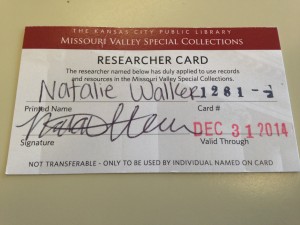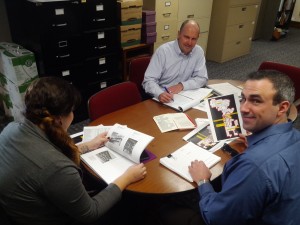By Natalie Walker
Researching is sometimes incredibly boring. I know as a History major I probably should not say that, but I am sure many of you would agree that it often feels monotonous, tedious, and tiresome. It certainly feels that way when you have been researching something for quite some time and even though you have a few leads, nothing seems to check it entirely. There are also those rare moments in which something does reveal itself and even if no one else can recognize the importance of the moment, you yourself feel that you are the ultimate puzzle master, fitting the pieces together slowly but surely.
While working on some final research for some of the more illusive churches within my districts, I discovered an entirely new way to research. Well, I would say that it is not new to everyone, but certainly to myself. I started by working backwards, looking at the website of the newest congregation that occupies the church I had been searching for. When that turned up very little I visited the Missouri Valley Room, and again, no such luck. I was momentarily excited because their seemed to be a wealth of information on the church I was looking into, Paseo Christian Church, though the MVSP only had information on the West Paseo Christian Church. Anyways, I finally took the problem to my internship advisor at City Hall and we both attempted to unravel the secrets surrounding the church such as architecture and the original congregation. Unfortunately, we had little success.Eventually, after a LOT of googling I learned a very brief history of the church. That said, it certainly was not enough to write a full paragraph about. While I did have the architectural information and a little information on the first congregation, I still wanted a more complete history of the church’s function in the city today.
 Since starting this internship, Google Earth has been one of my best friends. I use it to maneuver around the buildings and try to understand the architectural influences of a structure, etc. Well after circling around the building at least a dozen times, I noticed an engraving on a stone tablet above the back (probably basement) entrance to the church. (the image is not fantastic, but I think it captures the awesomeness that is Google Earth). It read “Carver Baptist Bible Institute.” So now I had my answer, or at least an interesting lead. I quickly learned that the Carver Baptist Bible Institute (CBBI) shares this structure with the current congregation, Grace Baptist Church. Anyways, the CBBI has its historical roots in the “Gospel Ambassadors” which was a teacher training ministry for the inner KC area and was founded by a woman named Mrs. Eva Jantz Blevins, a returning missionary from Africa.
Since starting this internship, Google Earth has been one of my best friends. I use it to maneuver around the buildings and try to understand the architectural influences of a structure, etc. Well after circling around the building at least a dozen times, I noticed an engraving on a stone tablet above the back (probably basement) entrance to the church. (the image is not fantastic, but I think it captures the awesomeness that is Google Earth). It read “Carver Baptist Bible Institute.” So now I had my answer, or at least an interesting lead. I quickly learned that the Carver Baptist Bible Institute (CBBI) shares this structure with the current congregation, Grace Baptist Church. Anyways, the CBBI has its historical roots in the “Gospel Ambassadors” which was a teacher training ministry for the inner KC area and was founded by a woman named Mrs. Eva Jantz Blevins, a returning missionary from Africa.
Once I had made this discovery, however small it may be, I felt truly accomplished. Like I had made a real accomplishment, not just as an intern, but as a researcher. Of course, this information is not unavailable to the public so I cannot say that I made some significant contribution to local KC History, but I nevertheless felt excited that I had made even the smallest discovery.







